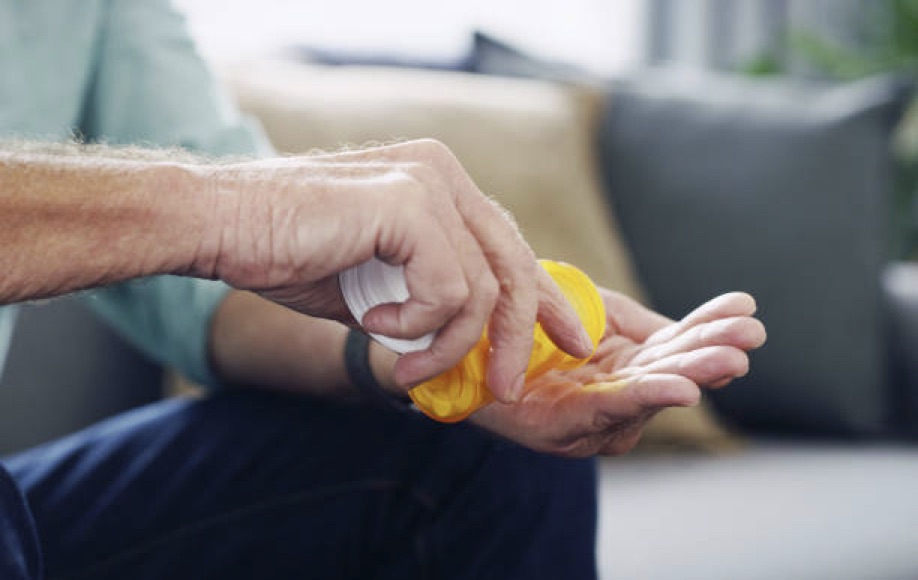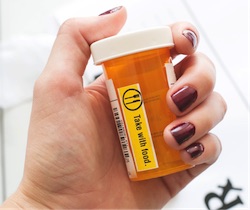
Substance Abuse and Adult ADHD
While 4.4% of people in the US carry Attention-deficit/hyperactivity disorder (ADHD) into adulthood(1), many adults remain undiagnosed, do not receive proper treatment, and may fall into substance abuse as a way to cope and self-medicate. (3).
Substance use disorders (SUD) remain among the most problematic co-occurring conditions with ADHD(4). To understand why this happens, it’s important to first understand what adult ADHD looks like.
Identifying ADHD in Adults
People with ADHD exhibit a pattern of inattentive or hyperactive and impulsive behavior. Symptoms include the following(5):
- Inattention: Six or more symptoms of inattention for children up to age 16 years, or five or more for adolescents age 17 years and older and adults; symptoms of inattention have been present for at least 6 months, and they are inappropriate for developmental level:
- Often fails to give close attention to details or makes careless mistakes in schoolwork, at work, or with other activities.
- Often has trouble holding attention on tasks or play activities.
- Often does not seem to listen when spoken to directly.
- Often does not follow through on instructions and fails to finish schoolwork, chores, or duties in the workplace (e.g., loses focus, side-tracked).
- Often has trouble organizing tasks and activities.
- Often avoids, dislikes, or is reluctant to do tasks that require mental effort over a long period of time (such as schoolwork or homework).
- Often loses things necessary for tasks and activities (e.g. school materials, pencils, books, tools, wallets, keys, paperwork, eyeglasses, mobile telephones).
- Is often easily distracted
- Is often forgetful in daily activities.
- Hyperactivity and Impulsivity: Six or more symptoms of hyperactivity-impulsivity for children up to age 16 years, or five or more for adolescents age 17 years and older and adults; symptoms of hyperactivity-impulsivity have been present for at least 6 months to an extent that is disruptive and inappropriate for the person’s developmental level:
- Often fidgets with or taps hands or feet, or squirms in seat.
- Often leaves seat in situations when remaining seated is expected.
- Often runs about or climbs in situations where it is not appropriate (adolescents or adults may be limited to feeling restless).
- Often unable to play or take part in leisure activities quietly.
- Is often “on the go” acting as if “driven by a motor”.
- Often talks excessively.
- Often blurts out an answer before a question has been completed.
- Often has trouble waiting their turn.
- Often interrupts or intrudes on others (e.g., butts into conversations or games)
Symptoms of ADHD may manifest differently in adults than in children. ADHD symptoms in adults lean more towards inattentiveness, such as forgetfulness, disorganization, and trouble multitasking(7).
For instance, kids may display hyperactivity by doing activities loudly, intruding on others’ personal space, or running around excessively.
Meanwhile, adults with ADHD may present hyperactivity symptoms through reckless behavior (such as driving too fast), talking too much and interrupting, or making inappropriate comments.
A Potentially Addictive Coping Mechanism
Adults dealing with extreme restlessness or boredom and impulsivity due to undiagnosed and untreated ADHD may be more inclined to self-medicate in an attempt to find relief from their symptoms.
One study has shown that more than 25% of adolescents seeking treatment for substance abuse disorder meet diagnostic criteria for ADHD(8).
Substance use disorder (SUD), or drug addiction affects more than 20 million adult Americans(9). Moreover, almost 8 million adults with SUD also have comorbid or coexisting mental illnesses or disorders(10).
A survey showed that individuals with a lifetime of mental disorders might have over four times the risk of drug abuse, and more than double the risk of alcohol abuse(11).
However, researchers noted that many adolescents with ADHD are not using addictive substances to get high(12). Rather, they are doing it in an attempt to improve their mood, sleep better, or calm their mind. The same outcome provided by prescription stimulant medication.
Patients diagnosed with ADHD who are unable to get their prescription medication are also prone to self-medication.
Almost two percent of ADHD patients visited an emergency room for substance abuse when they were not able to get their prescribed drugs(13).
Unfortunately, using potentially addictive substances to deal with ADHD and other mental or behavioral disorders may end up making conditions even worse.

Stimulants: For Better or for Worse?
Some people express concern that the use of stimulants to treat ADHD during childhood may increase substance abuse risk in adolescence and adulthood(14).
However, new findings seemingly indicate the opposite. A study noted that taking stimulant medications for ADHD is not only safe but may also help lower the risk of SUD(15).
The researchers looked at common ADHD medications, including methylphenidate (Ritalin) and dextroamphetamine (Adderall).
In the study, teenagers who took stimulant ADHD medications were found to be less likely to use illegal and addictive substances than those who did not take stimulants(16). The findings showed that ADHD medications were linked to a 35% reduced risk of coexisting SUD.
Additionally, male ADHD patients who took stimulant ADHD medications showed a 19% lower risk of future substance abuse(17).
Researchers stated that while ADHD stimulants may have short-term adverse effects, such as being habit-forming, its long-term benefits are promising(18).
However, it is still better for parents to ensure their children take proper doses of stimulant ADHD medications to prevent potential misuse in the future(19).
Warning Signs of a Dual Diagnosis
Coexisting mental health and substance abuse disorders are also called “dual diagnosis.” It may be hard to identify the warning signs of a dual diagnosis since some SUD symptoms may be similar to those of ADHD and everyday behavior.
The symptoms of dual diagnosis also largely depend on the type of substance used and the severity of the situation.
Some common signs of a dual diagnosis are:
- Suddenly changing behavior
- Neglecting health and personal hygiene
- Avoiding favorite or enjoyable activities
- Refusing to take medicine or go to treatments
- Mentioning suicidal thoughts or exhibiting suicidal behaviors
If a friend or loved one shows any of these symptoms, it may be time to sit them down for a talk and stage an intervention.
More importantly, if you see any of these symptoms in yourself, make sure to approach someone you trust to help you get the treatments you need.
Healthier Coping Behavior
An ideal treatment plan for a dual diagnosis is one that would target both ADHD and SUD at the same time.
Note that ADHD symptoms, like impulsive behaviour and poor planning, may interfere with or make substance abuse treatments ineffective. Similarly, addictive substances, like alcohol, may affect the benefits that patients get from ADHD medications(20).
Different ways to cope with and treat a dual diagnosis include:
- Attending individual or group therapy or counseling
- Taking non-stimulant medications
- Ensuring regular intake of ADHD medications
- Closely monitoring the use or request of psychoactive prescriptions
- Having a buddy help limit the patient’s access to alcohol or drugs
Adults with ADHD who feel they may be at risk of turning to addicting substances due to the strain of their condition may also benefit from similar treatments and interventions.
Technology can also help ADHD patients manage symptoms that may cause them stress, such as setting up reminders to address forgetfulness, disorganization, or poor time management.
Moreover, technology allows ADHD patients and their support group to stay in touch, even amid physical distancing requirements of the COVID-19 pandemic.
Having someone to talk to or help you manage potentially harmful coping behaviors can go a long way in managing ADHD symptoms and the risk of substance abuse.
About the Author
Stanley Clark is a community development volunteer and writer. He has worked on several commercials, events, and campaigns. Recently, he has moved to writing in the area of natural health and wellness, contributing regularly to CBDClinicals.com & W-radiology.com. Stan has a particular interest in reviewing CBD brands for their safety and legitimacy. His primary reason for working for is to break the taboo about cannabis. Stanley believes in CBD’s potential for helping people and communities with their health and wellness concerns.
References
- Children and Adults with ADHD. General Prevalence of ADHD. Retrieved from https://chadd.org/about-adhd/general-prevalence/
- Port, J. D. (2018, June 18). Diagnosis of Attention Deficit Hyperactivity Disorder by Using MR Imaging and Radiomics: A Potential Tool for Clinicians. Radiology, 287(2). https://doi.org/10.1148/radiol.2018172804
- Huntley, Z., Maltezos, S., Williams, C., Morinan, A., Hammon, A., Ball, D., Marshall, E. J., Keaney, F., Young, S., Bolton, P., Glaser, K., Howe-Forbes, R., Kuntsi, J., Xenitidis, K., Murphy, D., & Asherson, P. J. (2012). Rates of undiagnosed attention deficit hyperactivity disorder in London drug and alcohol detoxification units. BMC psychiatry, 12, https://doi.org/10.1186/1471-244X-12-223
- Zulauf, C. A., Sprich, S. E., Safren, S. A., & Wilens, T. E. (2014). The complicated relationship between attention deficit/hyperactivity disorder and substance use disorders. Current psychiatry reports, 16(3), 436. https://doi.org/10.1007/s11920-013-0436-6
- Children and Adults with ADHD. About ADHD – Overview. Retrieved from https://chadd.org/about-adhd/overview/
- Omitted
- National Institute of Mental Health. (September 2019). Attention-Deficit/Hyperactivity Disorder. Retrieved from https://www.nimh.nih.gov/health/topics/attention-deficit-hyperactivity-disorder-adhd/index.shtml
- Mariani, J. J., & Levin, F. R. (2007). Treatment strategies for co-occurring ADHD and substance use disorders. The American journal on addictions, 16 Suppl 1(Suppl 1), 45–https://doi.org/10.1080/10550490601082783
- National Institute of Mental Health. (May 2016). Substance Use and Mental Health. Retrieved from https://www.nimh.nih.gov/health/topics/substance-use-and-mental-health/index.shtml
- Ibid
- Mariani, J. J., & Levin, F. R. (2007). Op. cit.
- Wilens T. E. (1998). AOD use and attention deficit/hyperactivity disorder. Alcohol health and research world, 22(2), 127– https://pubs.niaaa.nih.gov/publications/arh22-2/127-130.pdf
- Indiana University. (2017, July 12). ADHD medication tied to lower risk for alcohol, drug abuse in teens and adults. ScienceDaily. Retrieved December 14, 2020 from sciencedaily.com/releases/2017/07/170712201249.htm
- Children and Adults with ADHD. (2017, Aug. 24). Medication Could Help Lower the Risk of Substance Abuse. Retrieved from https://chadd.org/adhd-weekly/medication-could-help-lower-the-risk-of-substance-abuse/
- Quinn, P. D., Chang, Z., Hur, K., Gibbons, R. D., Lahey, B. B., Rickert, M. E., Sjölander, A., Lichtenstein, P., Larsson, H., & D’Onofrio, B. M. (2017). ADHD Medication and Substance-Related Problems. The American journal of psychiatry, 174(9), 877– https://doi.org/10.1176/appi.ajp.2017.16060686
- Ibid
- Ibid
- Ibid
- Children and Adults with ADHD. (2017, Aug. 24). Op. cit.
- Meisner, J. R., Darredeau, C., McLarnon, M. E., & Barrett, S. P. (2008). Extended release stimulant medication misuse with alcohol co-administration. Journal of the Canadian Academy of Child and Adolescent Psychiatry = Journal de l’Academie canadienne de psychiatrie de l’enfant et de l’adolescent, 17(4), 181– https://www.ncbi.nlm.nih.gov/pmc/articles/PMC2583913/
